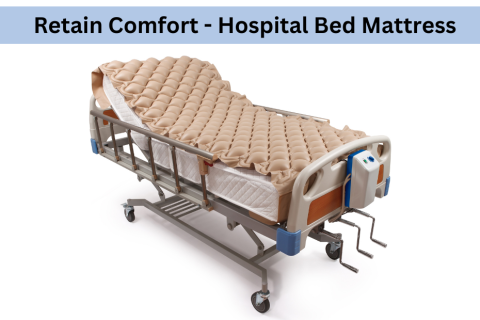Homecare Made Easy: Choosing t...
Apr 18, 2024Exercise for Seniors: Top 10 Workouts to Stay Fit and Active

Exercising plays a major role in maintaining one’s physical as well as mental health. Exercise is often perceived as a way to improve physical health, but several studies have shown that regular exercise improves mental health by preventing depression, anxiety, and other mental disorders.
As we grow older, our bodies refuse to move in the same way that we did in our younger days, reduced muscle strength and mass are one reason behind it. Exercises for seniors have gained popularity in recent years because of this.
Seniors can keep their freedom and ability to carry out daily tasks like walking, dressing, and bathing by maintaining their physical fitness.
In this blog, we will be discussing the top 10 exercises for seniors, and how to do them.
Top 10 Exercises for Seniors
1. Chair Exercise
Chair exercises for seniors require minimum effort and can be carried out quite easily.
While some older adults may not be able to move quickly or even get up from their seats, this shouldn't prevent them from exercising. This is where the chair exercises help the seniors, they can use a chair while performing a variety of common workouts.
Following are some chair exercises that can be performed by the seniors:
- Arm circles: Place your feet firmly on the floor while sitting upright in a chair. At shoulder height, extend your arms out to the sides and form little circles with them. Stretch the circles slowly over time.
- Seated twists: Place your feet firmly on the floor while sitting straight in a chair. Holding onto the chair's sides, turn your torso to one side while looking over your shoulder. Hold for a short while before rotating to the opposite side.
- Seated marching: Place your feet firmly on the ground while sitting upright in your chair. One leg should be raised toward the chest and then brought back down. Alternate back and forth while repeating on the opposite leg.
2. Balance Exercises
Balance exercises for seniors are important to help them keep their mobility and lower their chance of falling.
Some of the balance exercises for seniors are as follows:
- Single-leg stands: Stand on one leg for 10 to 30 seconds, then shift to the other. If necessary, you can use a substantial object for support, such as a chair or countertop.
- Standing balance exercises: Stand with your feet shoulder-width apart, you should be able to lift one foot off the ground while shifting your weight to the other. After holding for 10 to 30 seconds, move to the opposite foot.
3. Stretching Exercises
Age-related muscular stiffness and loss of flexibility can raise the possibility of injury. Stretching can ease pain and stiffness while increasing flexibility and mobility.
Stretches for seniors include the following exercises:
- Neck Stretches: Stretch your neck by tilting it slowly to one side, holding it there for 10 to 15 seconds, and then doing the opposite. After that, carefully tilt your head forward for 10 to 15 seconds, then backward for 10 to 15 seconds.
- Shoulder rolls: Keep your arms by your sides and roll your shoulders slowly in front of and behind you, in a circular motion.
4. Lower-Back Exercises
Lower back pain is a common issue faced by older adults. Lower back pain can be caused by strains caused by prolonged inactivity or sudden movements that pull muscles.
Exercises for lower back pain for seniors include the following:
- Pelvic Tilt: Lay on your back with your legs bent and your feet flat on the ground to perform the pelvic tilt. Press your lower back to the ground and tighten your abdominal muscles for 5-10 seconds.
- Knee-to-Chest Stretch: Extend your knees to your chest while lying on your back with your feet flat on the ground. One knee should be brought to the chest and held there for 15 to 30 seconds using your hands. Repeat with the other leg.
5. Walking
Walking is a low-impact exercise that is perfect for senior citizens because it helps with balance, cardiovascular health, and general well-being.
Over several weeks, progressively extend the length of your walks from 10 to 15 minutes. If necessary, you can also divide your daily walks into smaller chunks.
6. Swimming
Seniors can benefit much from swimming. Seniors can increase their cardiovascular health, flexibility, and muscle strength by swimming, a low-impact workout. The water's buoyancy lessens the strain on the joints and treats joint pain and stiffness.
Due to the abundance of community centers and gyms that offer water aerobics and group activities in the pool, swimming can also serve as a social outlet for seniors.
7. Yoga
Yoga is another form of low-impact exercise that can be easily accommodated in senior workouts. The primary benefit of yoga is its ability to improve mental health as well as physical health.
In addition to improving balance, flexibility, and strength, yoga helps reduce stress and anxiety.
You can practice yoga in the comfort of your own home or at a yoga center where trained specialist instructors teach you how to do it.
8. Cycling
As cycling is a non-weight-bearing exercise that places no strain on the joints, it's a great alternative for seniors who may have joint problems or limited mobility. It may also be modified to accommodate a variety of physical problems and skills, making it safe and accessible for seniors with varying degrees of fitness.
Older adults should take precautions to protect their safety while driving, including using the proper safety gear and complying with their physical limitations.
9. Dancing
Seniors can connect with people and lessen feelings of loneliness by dancing, which is an enjoyable and social exercise. Seniors may be better able to retain information by having to learn new procedures and habits.
Older people may feel happier and less stressed after dancing since it helps lift their mood.
10 Tai-Chi
Tai Chi is a low-impact workout technique that combines deep breathing with slow, flowing motions.
Tai chi is a safe and efficient type of exercise for seniors of all ages and physical conditions since it can be modified to suit varied skills and fitness levels.
According to studies, seniors who consistently practice Tai Chi have a lower chance of falling, better cardiovascular health, less stress and anxiety, and improved cognitive function.
In the End
Regular exercise helps seniors maintain their physical and mental health, lower their chance of developing chronic diseases, and enhance their quality of life. Before beginning an exercise program, seniors should speak with their healthcare professional to be sure it is secure and suitable for their particular requirements.









